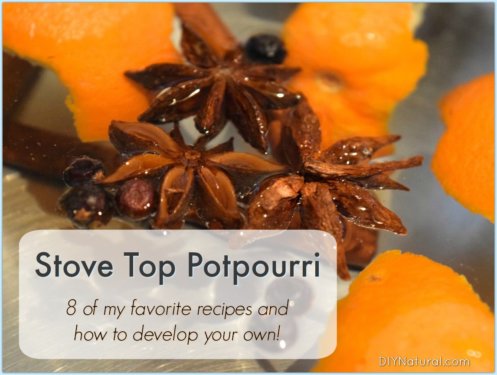
Learning how to make apple cider vinegar (ACV) is simple! Homemade apple cider vinegar is also useful in the kitchen and great for cleaning.
I’ll share with you the simple process and some troubleshooting tips to help you along the way.
How to Make Apple Cider Vinegar
Choose Your Apple Base
First of all, you can start with either fresh apples or apple cider. Then, if using cider, I recommend using organic unpasteurized cider. You want it to be unpasteurized so it retains the good bacteria. Don’t use filtered apple juice because you lose the good stuff.
In contrast, if you use fresh apples, choose any variety you like. Although any kind of apple will work, some will get mushy faster. So choose varieties that will “hold a slice,” like for pie. For example, Macintosh is one that goes soft very fast and probably wouldn’t be a good choice. You want the slices to remain firm so they don’t trap the bacteria in the mush. However, if you stir your cider, then there is nothing to worry about.
Preparing the Apples
Skip this step if using cider as your base.
If using fresh apples, you’ll need to prepare them a bit. Peel and core them, then cut into chunks. I usually make mine about 1-2 inches across. The size you make them will depend on the bottle/jar you use. You can use a clean, up-cycled glass cider bottle or a glass gallon-sized jar (like this wide mouth jar).
Prepare A Bottle/Jar
Be sure to use glass for making ACV. Plastic will often retain odors and other residues from anything else previously made in the container. You may not be able to see or smell it, but it can still be there. It is very important that your container is absolutely clean; wash and sterilize your jar well. Don’t worry about the lid because you won’t be using it for the fermenting stage.
Make Apple Cider Vinegar From Fresh Apples
Once you have a clean, sanitized container, begin adding apples. Pack it loosely, leaving enough room at the top for weight if needed. The number of apples needed will depend on the container being used. For a quart, use about three large apples.
Raw sugar, such as turbinado, will be needed to feed the “mother” once it starts to form. Mix about three tablespoons with about ½ cup warm filtered water just to dissolve the sugar. Pour over the apples and top with more filtered water. You can fill the container most of the way to the top. Do not cover with a lid – you can secure a piece of cheesecloth over the top to keep dust and bugs out.
If using a bottle, special tops can be purchased from your local homebrew store or online that are made to allow gasses to escape, but nothing can get in. They are sometimes straight with a bell type device (a water lock) or sometimes S-shaped. Both work just fine.
You want to keep the apples under the surface of the water. Eventually, they will sink, but might not to begin with. You can use a jar filled with water as a weight. Just be sure the outside of the jar is very clean. I use a brick in a zip-top bag, which works just as well. You may need a saucer or something flat to cover the surface and hold all of the apples down. Again, just be sure anything being placed in your container is clean and sterilized. Once the apples start to sink, you can get rid of the weight.
Make Apple Cider Vinegar From Cider
If using apple cider, omit the water, except what is needed to dissolve the sugar. You still want to use sugar to feed the “mother.” The mother is the particulate you may notice in store-bought raw ACV that sinks to the bottom. You can also add some of this already prepared to speed up the process.
Allow Time for Fermenting
This is by far the hardest part – waiting. It will take four weeks at the minimum for your vinegar to start forming, and as much as a year in some cases. You can taste it after about a month to see how it is. It will likely be sharply acidic, to begin with, but will mellow over time. I let mine sit about 3 months if I can wait that long. Your tongue will help you determine when it’s ready.
When it’s at the right acidity, you can strain the apples out of the vinegar. Use a stainless steel strainer or cheesecloth. Don’t worry about getting it clear – it should remain cloudy. This retains the good bacteria and keeps your brew at the right acidity.
Bottle the ACV and store in a cool, dark place. This will help it to keep the longest, although mine never lasts very long!
Troubleshooting Homemade ACV
Lots of things can potentially go wrong while learning how to make apple cider vinegar, but don’t panic. You rarely need to toss it out. Here are a few things you might see:
- Black, green, or grey mold – this is a sure sign that something has gone wrong. There is no salvaging a batch that has gone moldy. Feed it to your compost and start over.
- A chief reason for mold is equipment that hasn’t been properly cleaned. Be sure everything is very clean.
- White scum on the top? Don’t worry about this. There may be a little or a lot. It is a natural byproduct of the fermentation process and can be ignored or skimmed and tossed.
- Cloudy? This is normal too. Good ACV should never be clear.
- Got fizz? Some fizzing is normal due to the fermentation process.
- Sediment? That’s normal too. All good ACV should have some sediment on the bottom. This is the “mother” and helps the fermentation process.
- Foul smell or taste? This is not normal. You should taste and smell nothing but the vinegar itself, or maybe hints of apple. It should never smell like rotten fruit or taste bad.
- Alcohol? The first part of the fermentation process often produces a small amount of alcohol as the fruit acids start to break down. This is normal. After a few weeks, the alcohol is converted to vinegar.
That’s all there is to learn how to make apple cider vinegar. Now try using it in this delicious and healthy apple cider vinegar drink!
Flavoring Your Homemade Apple Cider Vinegar
Want to try a flavored vinegar? When it’s done, add a few raspberries or basil leaves and let sit for a week or so. Strain and enjoy your very own flavored vinegar! We have an article about making infused vinegar if you want to learn more.
You can also use this vinegar for cleaning, just like any other vinegar you would normally buy. Give it a try, it’s so worth the wait!
Have you ever tried making homemade apple cider vinegar? Tell us about in the comments below!
*******




I must be missing something. I don’t see a recipe here. And the instructions flip between real apples and cider. It is just some sugar dissolved in water and then added to the organic unfiltered cider?
I am super-focused on a Food Waste Free kitchen this month. My grapefruit peels with olive oil “candles” worked great but … not again unless I am in dire need of light (and have grapefruit or orange peels on hand.) Also on my list (after saving enough apple peels and cores) is to try my hand at vinegar. I am SO glad I stopped by to ready your instructions. Basically the same instructions I have but YOU mentioned the fermenter’s airlock! My husband unsuccessfully tried his hand at wine making years ago. I’ll use those airlocks to make my vinegar! Unless I can devise a way to use them on wide-mouth jars, it will be in glass gallons of apple cider (tis the season for it!) Maybe I can cut a hole in the wide-mouth lid and use a grommet? Hmmm…
Love this website! Made this but my recipe said to stir daily until scum forms. Don’t know how much difference that makes. Also used scraps and it works great!
I’m not sure either Rhonda. My vinegar did have some scum, but it tasted great. I thought this was part of the natural process and from what you’re saying, it looks like I was right!
Is it possible to make something of Organic Grape Juice left on the counter overnight? It’s very expensive and there must be some way to turn this ‘Lemon’ into ‘Lemonade’ or Vinegar or something useful.
Thank you for any help you can give.
Also, thanks for the Making ACV Tutorial. I was telling my husband we need to learn to do this.
Hi Terry. I’m not sure about this since I’ve never done it, but I’m sure the process is similar. I have a friend who grows his own grapes to make balsamic vinegar, so I know that it can be done with grape juice. This is where red wine vinegar comes from. I think most fruits go through a fermentation process that goes then to a vinegar process. It makes sense anyway!
This seems like a good recipe. I have made my own ACV, but I used the cores and skins after I had made a couple of apple pies. It worked great. I let it sit for a month, monitoring it to make sure it didn’t mold and tasted it to see when I liked it. In all, it took about 3 months to make it where I liked it best. It was milder than bought ACV and I really liked that.
Thanks Linda! Like I mentioned above, I’ve since tried it this way and it works great! I’m all for using as much of the fruit as you can.
What happens if I use brown sugar?
I’m sure you can use brown sugar, Robyn. I think any kind of real sweetener would work. You just need it to feed the mother. There really isn’t much sugar left after the process is done. I wouldn’t use stevia since there is no nutritive value. I would think this would starve the mother.
I use the scraps, peels and cores left over from making apple pie, apple butter, jelly, etc. I also use black strap instead of sugar.
Michelle are you saying that we do not have to peal and core the apples to make ACV? That seems like a great way to save a lot of time and apples!
Yes, while making anything with apples, like pie, etc., I save the peels, cores etc. I put them in a huge a jar and make ACV. This way I do not waste any part of the apple and I have used the the apples for more than one product. It saves money and time.
The first time I made it from apples and not cider, I used chunks of apples like my grandmother had taught me. The next time, I used the peelings and cores like you, Michelle. I’ve done this since writing the article and it’s still “working”, but it’s a great way to use everything. Thanks for the tip!
After didar gas produce too much why. How can I stop gas….
Should I use preservatives if yes than what should it be
Gas is normal, Devinder, as long as there isn’t too much. You don’t want to stop it, it’s a part of the natural process. Using a check valve like used for brewing wine will help it to escape safely without letting anything back in or causing the bottle to burst. I’ve never used a preservative, it’s usually not necessary.
Yes, I am curious about this as well… can you use the mother?
Yes to you too, Tess! The “mother” can be used to start new batches. You don’t need to use it, but I think it helps speed things up.
Thanks Debra!
Hi Debra,
Is the mother that forms able to be utilized to make the next batch or will this process have to be done for every batch? I am familiar with the Kombucha fermenting process, would this be the same?
Thanks,
Hi Crystal! Yes, but not quite. I do use the “mother” from a previous batch to start a new batch. It’s similar to making kombucha in that you would keep using parts of the mother. The difference is that the mother in ACV is more like sediment that collects at the bottom while the kombucha mother forms “pancakes” at the top that peels off “babies” from the bottom of the stack. Both, the babies and the sediment can be used to start new batches.
Thanks so much Debra!